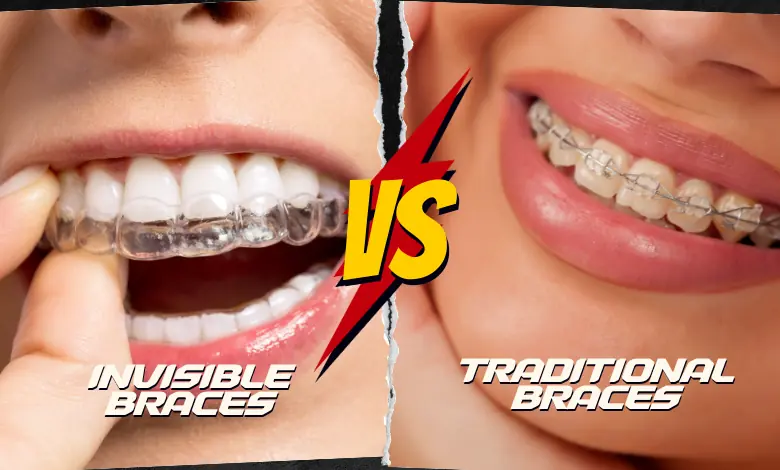Why Invisible Braces Are a Better Choice Than Traditional Braces

A straight, healthy smile is a common goal for many individuals, but the prospect of having traditional braces can be off-putting. Fortunately, advancements in orthodontic technology have introduced an alternative: invisible braces, also known as clear aligners. These innovative orthodontic devices have gained popularity for several compelling reasons. This article will examine why invisible braces are often considered a superior choice compared to traditional braces.
1. Aesthetics: The Power of Invisibility
One of the most apparent advantages of invisible braces is in their name – they are virtually invisible. Clear aligners are made from transparent medical-grade plastic, making them an aesthetically pleasing choice for individuals who want to straighten their teeth discreetly. Unlike traditional braces, which are highly visible due to metal brackets and wires, clear aligners blend seamlessly with your natural smile. This means you can smile, speak, and attend social events with confidence without feeling self-conscious about your orthodontic treatment.
2. Comfort and Convenience: A Better Fit for Your Lifestyle
Clear aligners offer a level of comfort and convenience that traditional braces simply can’t match. With traditional braces, metal wires and brackets can cause irritation and discomfort in the mouth. In contrast, clear aligners are custom-designed to fit snugly over your teeth, minimizing any potential discomfort. There are no sharp edges or protruding wires to worry about, which means less soreness and fewer emergency orthodontic visits.
Additionally, clear aligners are removable. This feature provides significant convenience in your daily life. You can remove the aligners when eating, allowing you to enjoy all your favorite foods without restrictions. Traditional braces come with a long list of foods to avoid, such as popcorn, hard candies, and crunchy snacks. Clear aligners free you from these dietary limitations, making mealtime a stress-free experience.
3. Improved Oral Hygiene: Easier Care for Your Teeth
Maintaining good oral hygiene is essential during orthodontic treatment, as it helps prevent issues like cavities and gum disease. Traditional braces can make brushing and flossing more challenging due to the metal components that obstruct access to teeth. This can lead to plaque buildup and hygiene challenges.
Clear aligners from companies like Sensu offer a solution to this problem. Since they are removable, you can take them out when it’s time to brush and floss, allowing you to clean your teeth thoroughly and efficiently. With clear aligners, you won’t have to worry about the extra effort required to clean around brackets and wires, reducing the risk of dental issues during your orthodontic journey.
4. Predictable Results: Precision in Treatment
Clear aligners are created using advanced computer-aided design (CAD) and 3D printing technology. This precision allows for a highly customized treatment plan that carefully maps out the movement of your teeth. As a result, clear aligners can provide predictable and efficient results when worn as directed.
Orthodontists can accurately predict the progression of your treatment, which means you’ll have a clear understanding of your treatment timeline and the expected outcome. Traditional braces can be effective, but the process can be less predictable, and the results may vary from case to case.
In conclusion, clear aligners have revolutionized the world of orthodontics, offering numerous advantages over traditional braces. From their aesthetic appeal and comfort to their convenience and predictability, invisible braces have become the preferred choice for many individuals seeking orthodontic treatment. While traditional braces are still a valuable option for certain cases, clear aligners are an excellent alternative for those looking for a more comfortable, discreet, and hassle-free way to achieve a straight and healthy smile.
Also Read: 5 Common Mistakes with Braces Maintenance and How to Avoid Them






